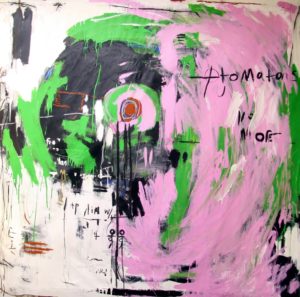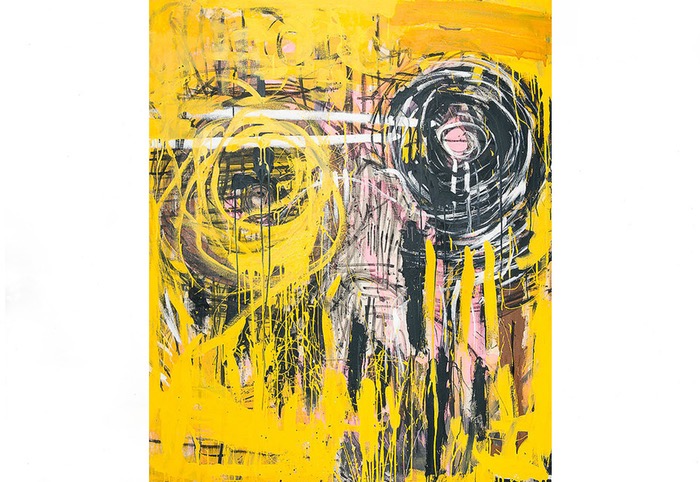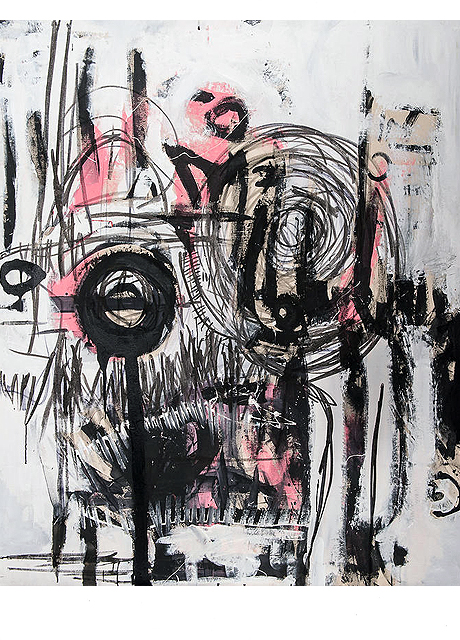
Òmó Oba Adetomiwa A. Gbadebo
About:
Gbadebo’s first solo exhibition in the Midwest, “Oba Kò so – Erú Ko Si Siwaju Sii (The King Did Not Hang. Slaves No More.)” is named after a play by Duro Lapido about Yorùbá mythology, and opens on Friday at City Wide Artists in Minneapolis.

A lifelong artist, it was around age 10 that Gbadebo gave up on tracing. “It never came out right,” he says. By eschewing the need to be neat, he came into an abstract style that yields bright, bold, large-scale works can take months to complete. Even then, he says a work is never finished; rather, it grows and expands. “It’s very tedious,” Gbadebo explains. “There’s a lot of mind power that I put in my work.”

While Gbadebo’s early aesthetic was more detailed and dominated by imaginary landscapes, circles, and constellations, his current work revolves around themes of the human journey, Ifá philosophies, and the goal of societal enlightenment. “Aesthetically, work always changes,” he says. “It’s not something I decide to do. It changes with age, with time.”
Red, white, and black — dominant colors in African culture — are constants in his work, though he doesn’t choose the colors, per se. Inspired by his colorful homeland, “any application of color or lack of certain colors is destiny,” he says.
Gbadebo’s his primary role models are his mother, father, and grandfather. “Those are my influences in how they live their lives.” As for artists, he cites American painter Julian Schnabel (who uses broken ceramic plates as “canvases” for his paintings), because he appreciates the of the scale of his work.

Whatever you do, don’t compare Gbadebo to Jean-Michel Basquiat. (He gets that a lot.) “To the dominant culture in the U.S., Basquiat stood out because he was probably the most wealthy black artist of his time,” Gbadebo says. “But people did not know much about African culture in the U.S. He referenced a lot of spiritual entities is African culture. To me, when people look at my work and say ‘Basquiat,’ it means that they don’t know much culturally about my work. The American Caucasian artists see themselves as individuals, but they see African artists, black artists, as collective. It’s something that I don’t take pride in at all. It’s something that I kind of detest. Every artist is individual. I’m not choosing my colors because of Basquiat or Picasso.”(text City Pages, November 10, 2015 by Erica Rivera)
